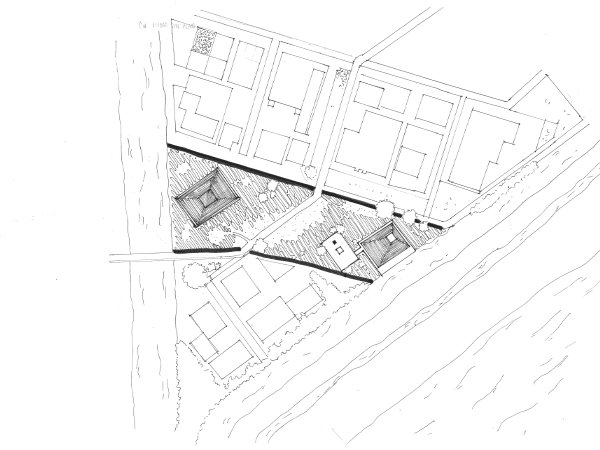
Final Project
The Institute for British Indian Health
Situated in the heart of East London, The Institute for British Indian Health stands as a homage to what in part made London as economically successful as it is, India and its commodities. The institute includes fields that harvest what is now seen as quintessentially British – tea – along with the spices with which it was traditionally made. The research the institute conducts regards the implementation of freshly grown Indian spices, more growable now in the warmer UK, within food in order to naturally medicate the guts of British Indians, who are more susceptible to food-related diseases due to famines inflicted under the British Raj.


The design is derived from the process of tea-making, the history of the British pub, and the unique rural landscape of the Lea Valley.
Situated along the Lea River, the East India Docks enabled the activity of the East India Trading Company, directly connecting with the Thames, transporting commodities, such as cotton, silk, spices, tea, etc. from India to the UK. As food was a tool of economic growth in London, in India, it was used as a weapon during the British Raj. Inflicted famines against one generation of Indian people genetically altered their digestive processes, making them more susceptible to food-related health conditions.
The only remaining relic of the East India Company is the East India Arms – a pub. This speaks to the vastness of the role pubs play in British culture and socialisation. The pub is a middle ground for conversation and mediation, hidden within the guise of sharing a drink. However, as the younger generation especially moves into alcohol-free living as well as generally a more health-conscious approach to food, there is room for traditional healing and medicinal food and drink to be the new innovation brewed in London. These qualities can be found in Indian methods of preparing food and drink, mostly within the use of natural spices, in Ayurvedic culture.


Despite being within the urban environment, the lea valley has nurtured its rural feel through its large agriculture industry, its tranquil marshes, and the surrounding bodies of water giving it an ‘exotic’ feel. The institute, therefore, whilst standing as a peaceful protest against the expected grandeur of London, finds its place within the smaller site amongst the abundant fields. Not only does the institute serve as a relic of the large-scale relationship between the two countries, but it addresses the long-standing stigma of Indian food. What was once seen with disgust, traditional Indian food methods can be correctly introduced into Western society as a healthy, healing approach to food. The Institute for British Indian Health recognises the power of food as a weapon, facilitator, and healer.



Visionary Thinkers
Visionary Creators
Visionary Makers